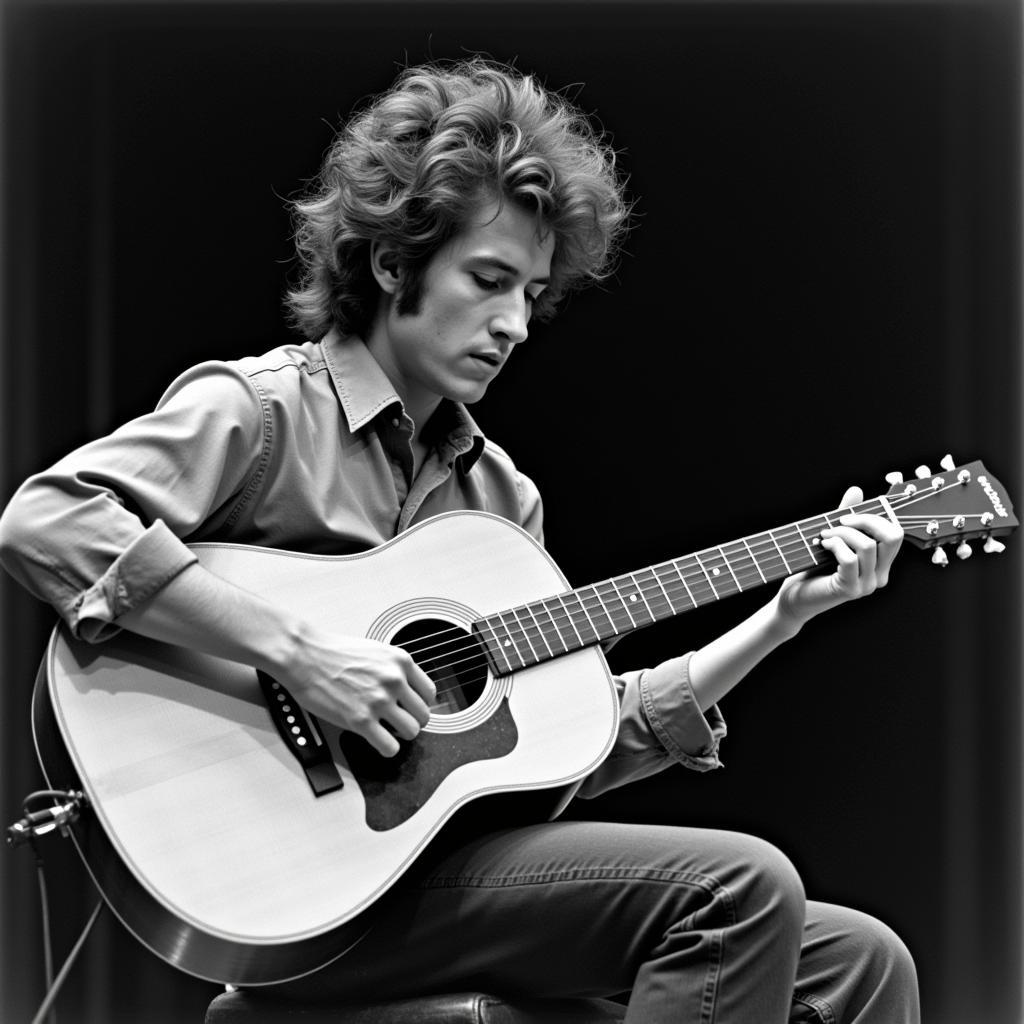The year is 1965. Bob Dylan, the enigmatic voice of a generation, releases an album that would become a landmark in his career, and in the annals of music history: “Bringing It All Back Home.” While the album marked a departure from Dylan’s earlier acoustic folk sound, incorporating electric guitars and a more experimental edge, it also subtly hinted at something else – a deep appreciation for musical traditions that stretched far beyond the borders of America. One such influence, often overlooked, can be found in the vibrant tapestry of Spanish music.
While Dylan himself has never explicitly confirmed a direct Spanish influence on his music, discerning ears can detect echoes of flamenco’s fiery passion, the melancholic beauty of fado, and the rhythmic pulse of Cuban son in his work. These echoes are not blatant imitations, but rather subtle inflections, whispers of inspiration woven into the fabric of his unique sound. It is as though Dylan, in his quest to redefine American folk music, recognized a kindred spirit in the rich and diverse musical heritage of Spain.
Echoes of Iberia: Identifying Spanish Influences in Dylan’s Work
The influence of Spanish music on Dylan’s work is perhaps most evident in his lyrical themes and storytelling approach. Just as flamenco often tells tales of love, loss, and struggle, Dylan’s songs are filled with characters grappling with societal issues, personal demons, and the search for meaning in a complex world.
 Bob Dylan playing a Spanish Guitar
Bob Dylan playing a Spanish Guitar
Take, for example, the song “Boots of Spanish Leather” from Dylan’s 1964 album “The Times They Are a-Changin’.” Although not directly referencing Spanish musical styles, the title itself evokes a sense of romanticism and adventure often associated with Spain. The song’s narrative, a tale of longing and lost love, further reinforces this connection, mirroring the themes of heartbreak and resilience found in traditional Spanish folk songs.
Beyond the Lyrics: Musical Parallels and Shared Sensibilities
Beyond lyrical themes, there are also intriguing musical parallels between Dylan’s work and certain Spanish styles. The use of modal scales and unconventional chord progressions in some of Dylan’s songs, particularly during his “electric” period, bears a striking resemblance to the harmonic complexities found in flamenco music. The driving rhythms and syncopated guitar lines of Cuban son, a precursor to salsa, can also be heard as a subtle influence on Dylan’s more upbeat and experimental tracks.
“It’s not about direct imitation,” says Dr. Maria Sanchez, a musicologist specializing in the Iberian Peninsula. “It’s about a shared sensibility, a recognition of the raw emotional power that music can possess. Both Dylan and Spanish folk traditions understand the power of music to tell stories, to express joy and sorrow, to challenge and provoke.”
A Global Tapestry: Dylan’s Music as a Bridge Between Cultures
While the extent of Spanish music’s direct influence on Bob Dylan remains a subject of debate among music scholars, what is undeniable is the universal appeal of both. Dylan’s ability to tap into the raw emotions of the human experience, to give voice to the joys and sorrows that unite us all, transcends cultural boundaries.
Just as Dylan found inspiration in the music of other cultures, his music has, in turn, inspired countless artists around the world, Spain included. In this way, music becomes a bridge, connecting cultures and generations through shared emotions and a common love for the power of sound. So, the next time you listen to Bob Dylan, listen closely. You might just hear the faint echo of a Spanish guitar, a flamenco dancer’s foot stomp, or the heart-wrenching wail of fado, reminding you of the global language that is music.